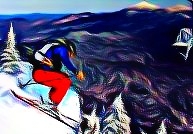Interesting Developments in Long Range Winter Forecasts
New analog years showing up: 2002-2003, 2004-2005 and 2006-2007. What does this mean for winter?
I generally detest long range winter forecasts for several reasons, including but not limited to:
1. They are useless. If I tell you it will be warmer than average in December what does that mean? Will there be tons of snowy 32 degree days? Will there be mostly “cool” days with three scorchers? Will there be storms when it’s normal or when it’s warm? No answers.
2. They are blunt objects in terms of geography. For example if I were to tell you that the “Mid-Atlantic” looks to have a few good storms in January what would that mean? Go ski the poconos? The catskills? New York isn’t the Mid-Atlantic to some but the Catskills are like a hour from parts of the Poconos (though be aware the Catskills are not part of the app. chain…true story, just an eroded plateau).
3. People phrase the forecasts like FBI profilers. I.E. they phrase them in ways so that they can’t be wrong. (Want a good read- find the article from either esquire or GQ trashing FBI profilers. It’s funny and compares them to carnival mind readers) Bascially the forecast is written so that no matter what happens somethings are true and somethings are false. The hope of the writer is to be remembered for the true bits either because they are absurdly detailed and lucky or either because they huge and a monkey could have predicted them but you remember the event.
Why am I telling you all this….because I want to talk about some analog years. Analog forecasting bascailly just asks “what happened in the past when we had the same conditions as this year at this time in the past.” The conclusion is then- what happened in the past will happen again. Makes sense so long as you understand the above stated weakness of long range forecasts.
Well this year many people made long range forecasts based on El Nino peaking in the weak phase. In the last 5 weeks or so El Nino blew past the weak benchmark and strengthed rapidly. It’s now into the “moderate” category. Where it’s going to peak is really less important IMO than how it got there. It rapidly spiked in October and November. Years that saw this rapid spike were: 1965 -66 2002-03 2004-05 and 2006 -07. Interestingly none of these years were years that were thrown about as analogs based on the summer we had. (Look in the weather archive if you don’t believe me).
Taking a closer look at these winters one major commonality appears:
Big February/Late January Dumps:
There was the President’s Day storm of 2003, There was the historic late January 2005 Blizzard (more of a southern VT, Mass storm) and a of course the Valentines Day 2007 storm.
Looking at the Mt. Mansfield snow stake for these years is inconclusive but interesting:
2002-2003
2004-2005
2006-2007
Anyway- what to take away from this? Look forward to February. (What’s new right?)
11/19 Edit: One last tidbit…Whistler is poised to break it’s all time November snowfall record. It’s just a few centimeters away from the record with 12 days left in november and snow forecasted for several days this week. Want to know when the about to be trashed record was set…wait for it….a little more….2006. Just another little nugget to consider when looking at what might happen this winter.
4 Comments
Leave a Reply
|
|||
| Home |






Scott
wrote on November 18th, 2009 at 5:09 pmNice work man. Like you, I haven’t been impressed with what I see for December and think it will be a roller coaster of big temp swings with equal chances for big snow or big rain. I do like how weak to moderate El Nino patterns tend to progress as we get towards the meat of the winter in Jan/Feb…leading to me having high hopes for the middle of the season as far as sustained cold. Now, everyone is going to say sure, that’s the coldest time of the year so of course there’s a good chance for sustained cold but I’m always thinking in terms of relative to normal.
Lionel Hutz
wrote on November 18th, 2009 at 5:35 pmexactly- relative to normal. Last Feb. was not full of storms. There was a huge snow event towards the end but that was more of an upslope enhanced event than a synoptic nor’easter event. The fact is that while late Jan. and Feb. are the coldest and “best” months of winter, not every winter features lare storms. I think this one will have a doozy in there.
(now we have weather thingy and doozy).
Bill Tarkulich
wrote on November 19th, 2009 at 11:38 amthanks for the rant on long-range prognostications or shall we say, lies.
My family is adjusting to the fact that when the snows do fly, I’ll be gone. Its seeming each year that the “windows of opportunity” are narrowing, short flashes that require immediate attention.
Sam
wrote on November 21st, 2009 at 8:46 amany chance you can put the rush on that doozy, or at least get us a weather thingy before too long? Maybe just some cold air so I can go ice climbing?
please?